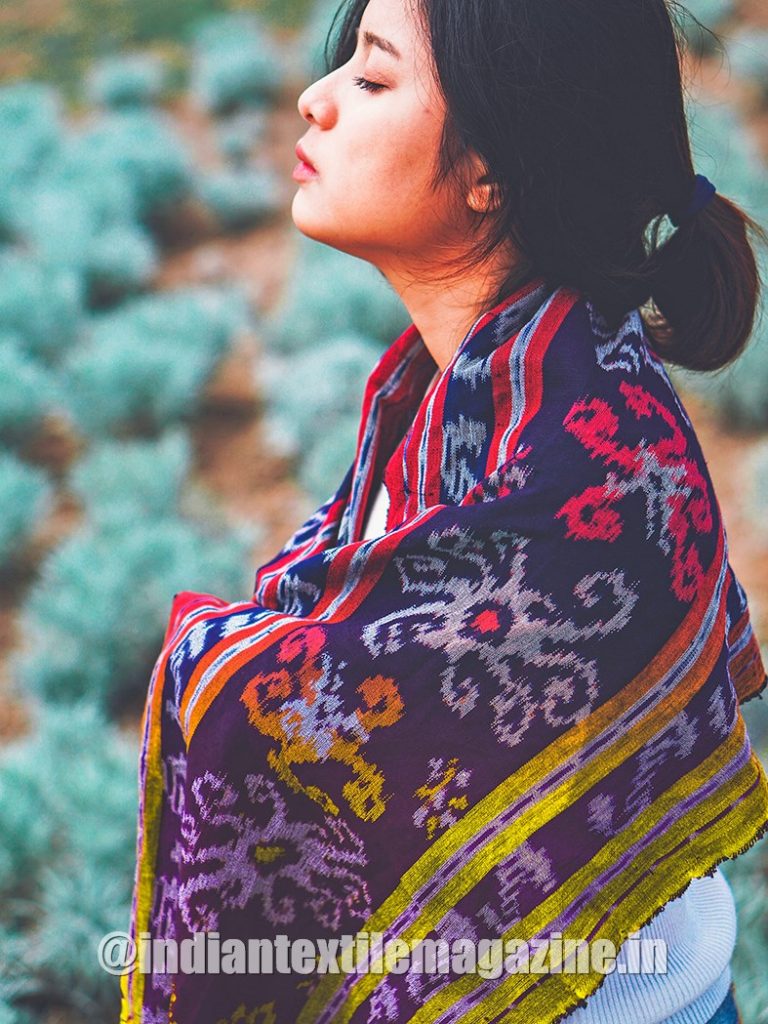Previously a fabric limited to only the wealthiest classes, jacquard fabric used to decorate the grandiose residents of wealthy aristocrats and could only be woven by a small handful of master weavers who knew how to artfully manipulate looms into majestic tapestries, draperies and upholstery. While modern jacquard is no longer as inaccessible as the luxurious fabrics of the past – on the contrary, it’s one of the most ubiquitous fabrics on the market – and tends to be knit rather than woven, it leaves little to be desired in terms of available patterns and textures.
As modern consumers’ demand for stylish yet comfortable clothing continue to push designers into unexplored realms of creativity, jacquard’s virtually limitless design possibilities, both in terms of colors and textures, are more than enough to whet designers’ creative appetite. But its creative appeal is not the only reason jacquard has become such a popular knitting technique. Unlike printed designs, the method of choice for adding graphics or logos to clothing, jacquard knits patterns and textures directly into garments. As such, jacquard patterns don’t easily fade or degrade, retaining their vibrancy even after several washes.
Despite the obvious advantages jacquard knitting offers, it still has its drawbacks. Although it can smoothly knit up to six different types of yarn, all the strands of yarn are knit together simultaneously, which means any more than six presents a technically challenging knitting operation, and also burdens the garment with unnecessary volume. For every added strand of yarn, the harder it is for the machine to bring the selected yarn to the surface, and the thicker the fabric becomes.
Until recently, a knitting technique that can knit multiple types yarn into exquisite patterns, without thickening the fabric or burdening the knitting machines, did not exist on the market. In response to a growing need across the industry, driven by athleisure enthusiasts looking for comfortable yet stylish clothing, Pailung developed a proprietary knitting technique to solve this problem: Segue Jacquard.
While the untrained eye may not be able to tell the difference between Segue Jacquard and jacquard, industry experts will appreciate the subtle yet vital improvements Segue Jacquard offers to the classic knitting technique.
Segue Jacquard offers four major improvements over classic jacquard, as listed below:
Less technically challenging
As mentioned above, jacquard is a knitting technique that can knit fabrics into exquisite patterns and textures; however, the degree of knitting difficulty intensifies when knitting more than six different types of yarn, as jacquard simultaneously releases all types of yarn. Segue Jacquard, on the other hand, only releases yarn as needed, and will automatically snip out any unnecessary yarn.
While manufacturers can certainly continue using standard jacquard for patterns featuring less than six different yarn types, consumer demand for comfortable clothing with a unique style will only continue to grow. Segue Jacquard presents an opportunity to create even more complex patterns and adapt to changing market demands.
Finer fabric
As was established in previous sections, classic jacquard releases all different yarn types simultaneously, unable to create vivid patterns without weighing down fabrics with unnecessary bulk. Segue Jacquard, however, releases yarn one at a time, allowing designers to design shoe uppers in with multiple different yarn types, of varying material, color and denier value, without thickening the fabric with uncomfortable excess.
More striking embossed patterns
Because Segue Jacquard offers the ability to combine eight types of yarn of different materials, colors and denier values, designers can create especially striking embossed patterns that really pop. This effect is further enhanced by the finely knit fabric that doesn’t thicken, even with the addition of multiple different strands of yarn.
Less material waste
Classic jacquard releases all yarn types simultaneously: in practice, this means any yarn that is released, but not used in the pattern, is wasted. Thermal bonding yarn, for example, is used to strengthen the shoe upper in areas where support is needed, but certainly doesn’t need to be knit throughout the entirety of the shoe upper – however, manufacturers knitting classic jacquard have no choice but to continuously release all yarn types at once. In contrast, Segue Jacquard allows manufacturers to release yarn only when it is needed – saving money and material.
Segue Jacquard enables apparel and shoe designers to knit sophisticated designs and impressive embossed patterns, without creating fabric that is uncomfortably bulky. As the athleisure trend continues to tear through global consumer markets, consumers are demanding clothing that is just as comfortable as it is stylish – and a knitting technique that creates lightweight fabric donning extraordinary patterns may be exactly what brands need to distinguish themselves from competitors. Furthermore, Segue Jacquard uses less materials to create patterns that are just as or more impressive than typical jacquard, helping save money and material while improving sustainability scores.
Pailung, an internationally renowned knitting machinery company, is the sole developer of KRTDCJ6, the only machine in the world that can knit Segue Jacquard. KRTDCJ6 which can knit both apparel and also shoe uppers, will be featured at Pailung hall 8-B206 at ITMA 2019.
